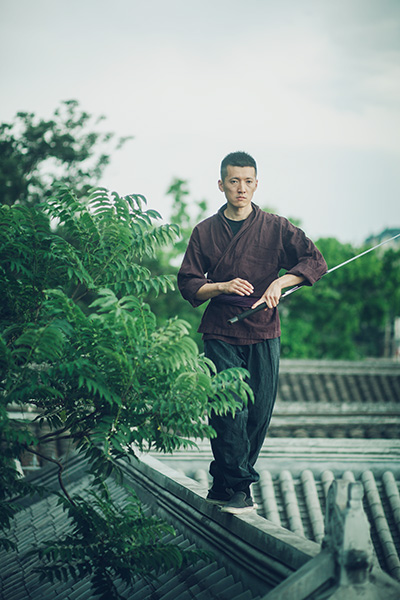 |
|
Traditional Chinese martial arts are adored by many Chinese fans, including hostel founder Daniel Huang from Taiwan. [Photo provided to China Daily] |
Critical learning
Compared with combat sports like MMA, which adopt scientific training approaches carried out within a specific, concise framework, traditional martial arts seem to have developed into a more complex and-some claim to a degree-redundant system.
"Traditional martial arts contain too many variations. That's what many practitioners were actually proud of," says Liu Zhongyi.
The 36-year-old is a descendant of masters who practiced the Seven-Star Praying Mantis, a well-known, traditional northern-style kung fu.
"But if you want these arts to be efficient, they need to be more concise," he says.
Liu Zhongyi is a financial director in a State-run company in Shandong province. He spends about 90 minutes every morning practicing traditional martial arts.
"It has been my long-term habit," he says. "I love kung fu from the bottom of my heart."
Liu Zhongyi says he began to realize that there were some gaps in kung fu after training for about two decades. The mantis fist encompasses several different styles. His kung fu master also modified the techniques he learned.
"Certain skills in the Seven-Star Praying Mantis are only useful in my own circle. They are not applicable to other traditional martial arts," he says.
Liu Zhongyi decided to search for more "universal kung fu skills" that could be applied to other traditional martial arts and even such fighting styles as MMA.
Liu Zhongyi hopes to find the original and most efficient skills within the mantis fist.
"I want to have a clear view of my system that will be easy to teach and learn," he says.